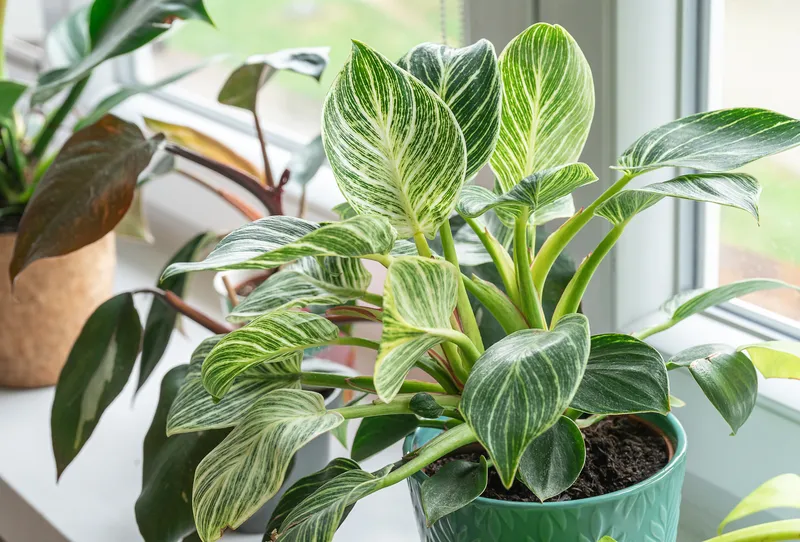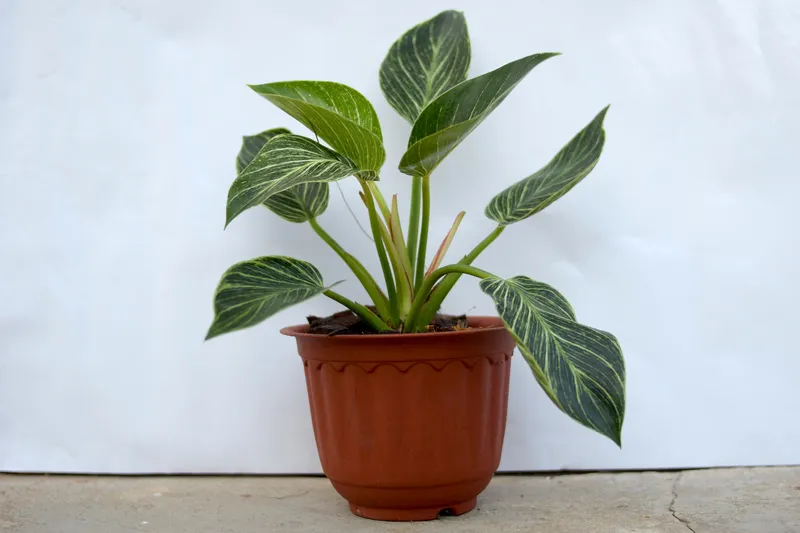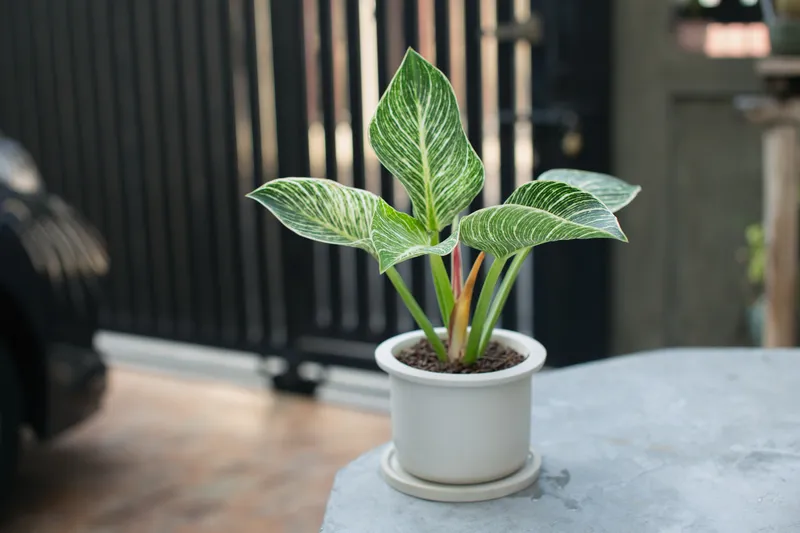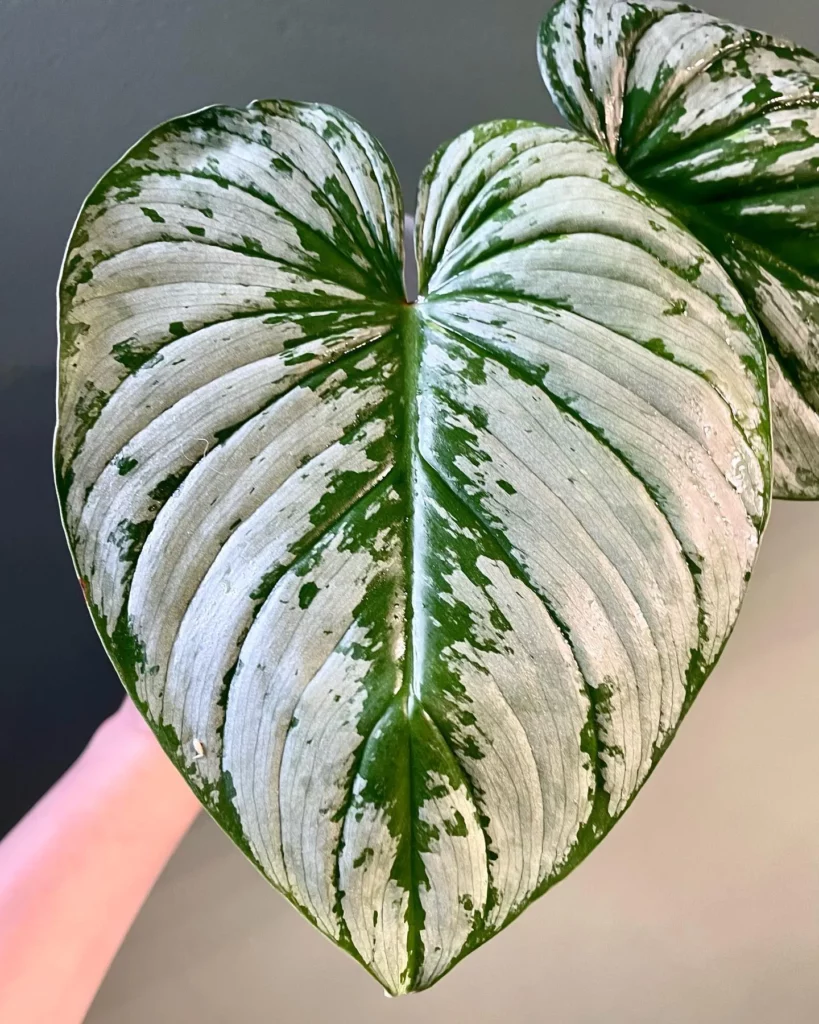The Philodendron Birkin, also known as the “White Wave”, is a rare hybrid of the Philodendron Rojo Congo. It is known for its dark green heart-shaped foliage adorned with white stripes. This rare beauty would make an amazing addition to any indoor garden! Its increasing popularity is well deserved as it is very easy to care for.
This lovely plant can grow up to 3 feet tall and wide. It is easy to care for and suits almost any indoor space. It has a slow growth rate, but will flourish as long as it’s properly cared for. The Philodendron Birkin is uniquely beautiful and an excellent choice for beginner gardeners and experienced plant lovers alike.
An Introduction To The Philodendron Birkin
Its History
The Philodendron Birkin was an unexpected mutation of the Philodendron Rojo Congo. It is classified as part of the Araceae family and the Philodendron genus. The Philodendron genus originates in South America. It grows in the rainforests of Brazil and Paraguay. However, the Philodendron Birkin does not grow in the wild.
The name “Philodendron” derives from the Greek word “philo” meaning love and “dendron” meaning tree. Essentially, you own a tree full of love! It makes sense as its foliage is in the shape of hearts. It would make an excellent gift to loved ones and friends alike! Especially if you told them what “Philodendron” means! The name Philodendron Birkin is believed to be a reference to the very costly Hermes bag.
Dark green foliage and a whitish yellow pinstripe pattern are key features of the Philodendron Birkin. The leaves vary in an array of green hues and are usually in the shape of a heart. The robust nature of this plant’s foliage makes it appear very full of life. Philodendron Birkins are extremely low maintenance, so having them in your garden is a good choice.
Types Of Philodendrons

The Philodendron genus has around 500 species of plants. The Philodendron genus belongs to the Araceae family. Some similar plants to the Philodendron Birkin include but are not limited to: the Philodendron Pink Princess, the Philodendron Brazil, and the Philodendron White Knight. The Philodendron genus is native to tropical regions, so most Philodendrons prefer environments that mimic their original habitat.
There are a number of Philodendrons ranging in shape and size. Most of them have similar needs when it comes to plant care. A majority of them prefer indirect sunlight. However, the Philodendron bipinnatifidum prefers much more sunlight and the Philodendron cordatum does well in darker spaces.
Almost all species of Philodendron that grow in the wild grow above the forest floor. They prefer soil that is airy and moist, but don’t like too much water. Humidity is preferred for a majority of these plants, but not required. The Philodendron Rojo Congo, which the Philodendron Birkin is a hybrid of, can grow up to 3 feet tall and 5 to 6 feet wide. Its stems are red and the leaves are a deep green. It grows slightly larger than the Philodendron Birkin. The Philodendron Rojo Congo prefers brighter indirect sunlight and can last through droughts.
Philodendron Birkin Care
Soil Requirements
The Philodendron Birkin prefers well-draining soil that is good at retaining moisture. Good drainage is important so that root rot is avoided. Peat moss and coco coir are also good choices. Coarse sand and perlite can be added to increase drainage. This plant prefers mildly acidic to neutral soil, the ideal pH being 6-7.
Light Preferences
The Philodendron Birkin prefers bright indirect sunlight. Be careful not to give this plant too much sunlight. Too much sunlight will cause this plant to wilt and lose foliage. Too much shade can also result in damage to the plant. This plant does best 12 hours of indirect sunlight.
Temperature And Humidity Requirements
The best temperature for the Philodendron Birkin is between 65° to 75° F. This plant does not survive well in temperatures below 55° F. Philodendrons are tropical plants so they prefer humidity environments. You can achieve this by using a humidifier or misting the leaves of your plant.
Watering Preferences
Philodendrons prefer moist and humid environments. However, overwatering can be detrimental to your plant’s health and cause root rot. When watering your Philodendron Birkin, make sure to check the top 1-2 inches of soil. Make sure the top 1-2 inches of soil are dry before watering your plant. You can check the soul’s dryness by sticking your finger in the top layer of soil.
Fertilizing Your Philodendron Birkin
It is best to fertilize your Philodendron Birkin on a weekly basis. Use a diluted balanced liquid fertilizer for the best results. Calcium and magnesium are also important for your plant’s health, so make sure that your fertilizer includes them. Be careful not to over fertilize however, it can cause harm instead.
Pruning Your Philodendron Birkin
The Philodendron Birkin does not require pruning. If there is discolored foliage you can remove it to refine the appearance of the plant and to improve growth.
Common Pests And Diseases
Spider mites and thrips are the most common pests for the Philodendron Birkin. In the case of infestation, isolate your plant from the others in your home. Isolation keeps the pests from spreading to your other plants. Use a store bought insecticide for the best results. Make sure to follow the instructions on the product carefully.
Root rot is a common disease for this plant due to overwatering. Overwatering can also cause fungal and bacterial infections. Using a fungicide should help with these issues. Removing affected foliage and roots and replanting your philodendron in a sterile pot and fresh soil should help with these issues.
Philodendron Birkin Propagation
Use a pair of pruning shears to take a stem cutting approximately 3-6 inches long. Place the cutting in a vial of fresh water leaving the top of the leaves above the water. Replace the water often for the best results. Within 2 weeks roots should begin to emerge. Make sure to place this plant in indirect sunlight.
Once the roots reach around an inch in length you can transfer the plant into soil. Be careful when replanting as the roots are very fragile. After potting your plant, remember to water it routinely and give it indirect sunlight.
Dividing Your Philodendron Birkin
When your Philodendron Birkin grows it will start to grow shoots beneath the dirt. These shoots are known as “pups”. Pups can be divided from the main plant and be used to propagate new Philodendron Birkin plants. Make sure that the pups have roots before removing them from the main plant. Use a pair of sharp cutters to cut the stem. Gently wiggle the pup loose from the dirt. Be careful not to pull or use too much force as this will damage the plant.
Trim the roots if necessary and repot the plant. Wait at least 7 days for the cut ends to heal before watering the plant. Watering the plant prematurely can cause root rot. Keep the plant in indirect sunlight and mist the leaves occasionally. After 7 days, you can begin watering your plant routinely.
Common Problems

The most common problems with the Philodendron Birkin are overwatering, underwatering, lack of sunlight, and lack of humidity. Yellow foliage usually indicates overwater or underwatering. If the top layer of soil is dry, it may be time to water your plant. If the soil is overly moist, you may have watered your plant too much. Rotting roots can be a result of overwatering. Cutting off infected roots and repotting in a clean pot and fresh soil will help solve this.
Brown or wilted foliage indicate lack of sunlight or lack of humidity. Lack of sunlight can cause stunted growth. The Philodendron Birkin does best in indirect sunlight and prefers humid environments. Giving your plant more sunlight and misting the leaves should help with this.
After reading this, check out our other articles on:
Frequently Asked Questions
Yes, the Philodendron Birkin is toxic to humans and pets. This plant contains calcium oxalate crystals, which are toxic to humans and animals. Washing your hands after handling this plant is recommended. Take care to not allow your animals or small children to consume this plant.
The Philodendron Birkin can take up to 10 years to reach full maturity. It grows mainly during the seasons of spring and summer.
The Philodendron Birkin does not do well in low light environments. It prefers indirect sunlight overall. It does not have high tolerance to shade or high sunlight exposure.
The Philodendron Birkin is a gorgeous and easy to care for houseplant. It would suit almost any indoor garden and makes a statement in any home. This Philodendron has such unique coloring and vibrance. If you are looking for some tropical flair in your home or just another leafy friend, then you have made the right choice. Its popularity is on the rise so get one while you can!





